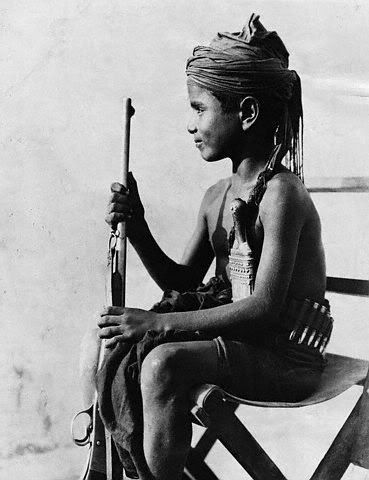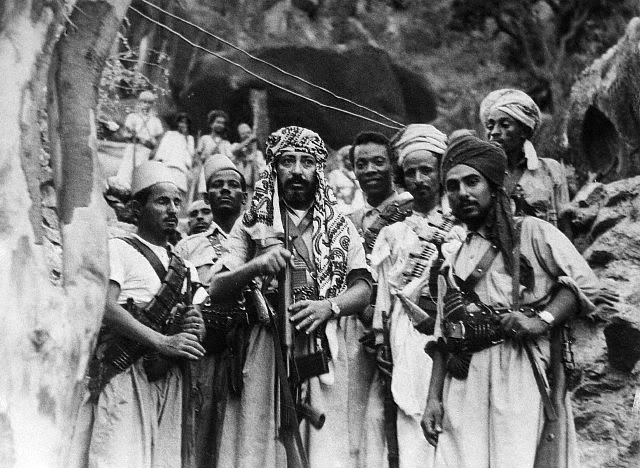
 |
|
|
|
|
#1 |
|
Member
Join Date: Dec 2004
Location: Hamburg, Germany
Posts: 72
|
I kindly ask for your help. A fiend of mine got knowledge of my interest in ethnographic edged weapons and gave me following gift. The remains of, I guess from other posts in the old forum, Arabian Jambiya. The handle seems to be wood, backside covered with silver, the blade is in a poor condition, missing parts of the edges and dark spots of rust. The sheath is missing, only a silver plate with ornaments and stones, I believe it is sard (Karneol in German), survived. First of all, do you think is comes from the Arabian Peninsular? What might be the age? And finally, what to do with it? Leave it as it is or try a restoration? Thank you in advance for your much valued comments.
Last edited by Rather; 2nd December 2004 at 09:48 PM. |
|
|

|
|
|
#2 |
|
Vikingsword Staff
Join Date: Nov 2004
Posts: 6,293
|
Are you sure the handle is wood because it looks like it could be Rhino horn from the color and grain structure .
Possibly Yemeni ? |
|
|

|
|
|
#3 |
|
Member
Join Date: Dec 2004
Location: 2008-2010 Bali, 1998-2008 USA
Posts: 271
|
Definatelly a Yemeni Jambiya, the hilt is made in local ,,Sayfani,, style. The missing scabbard would`ve been metalic semi-tubular and deeply curved, pointing way upwards. Like Rick, before me, I do believe the hilt is of horn, likely the mighty black African rhinoceros (Diceros bicornis) horn (in a classic scenario, after hunting or poaching the animal in the savannas of central western Africa, the prized harvested horn would transit via Arab, Jewish or Indian ship merchants to Zanzibar or Socotra Islands market and bazaars).
Seems to be at least a lifetime old (museum slang for ,,up to a hundred years old,,) and some preservation efforts are recommended. The encrusted gem is carmelian, which is nothing but the ,,a la carte,, choice. As you probably know, these daggers in different styles are very popular still in the entire Arab world, in many different shapes and sizes, always worn by men as a symbol of their status. The largest actual collection of Jambiya daggers known to mankind, likely belongs to the late King Faisal`s family in Riyadh, Saudi Arabia. Some in theme images for you:  Yemeni troops shouting for war (1962) Source: The Bettmann Library  An Armed Arab Child (1934) Source: The Hulton-Deutsch Library  Mohammed El-Badr with Royalist Tribesmen in Yemen (1960s) Source: The Bettman Library Last edited by Radu Transylvanicus; 3rd December 2004 at 02:23 AM. |
|
|

|
|
|
#4 |
|
Vikingsword Staff
Join Date: Nov 2004
Posts: 6,293
|
Rather , what is the bottom picture , a sheath fitting ?
Very nice looking stones . |
|
|

|
|
|
#5 |
|
Member
Join Date: Dec 2004
Location: Hamburg, Germany
Posts: 72
|
Very impressing pictures, I was not aware that the Jambaya was that popular still in the modern times. Thank you for sharing them.
Well, I have to admit that I never had a chance to see the horn of a rhino that close and it was always still fixed to the rhino…  But to be serious, the structure of the hilt does not show annual rings and it could be rhino horn. The silver plate with the stones was definitely a part of the sheath fitting, is shows the semi tubular shape, there are small holes at the sides and the size fits perfectly to the dagger blade. I am not going to clean it perfectly, as I like very much the old patina on the weapon. My other hobby is to collect old Ottoman coins, and a harshly cleaned coin is always worth much less than the same one with the beautiful colour of age. Nevertheless, this does not mean that one should not do essential preservation or sensitive restoration. My experience with old blades is near to zero, for more modern weapons like bayonets I use only a special oil for guns to avoid rust (a German product called Ballistol) and it is very recommendable. Nevertheless, it only removes thin rust films, not the thick rust. What would you recommend to do? What is best to remove the rust without damaging the blade? Is there a chemical way or is polishing powder a solution? Or leave it as it is? |
|
|

|
|
|
#6 |
|
Member
Join Date: Dec 2004
Location: Madrid / Barcelona
Posts: 256
|
Well, it's indeed an Arab Jambiya, from Yemen, as our Transilvanian Tiger has pointed out, and for the style of the hilt and what is left of the sheath, it may very well be a Gusbi, from the coastal area of Hadramaut, at the south, bordering the Arabian Sea. The hilt of those is normally similar to the "mainstream" Arab Jambiya, but the sheath has the peculiarity of curving very deeply upwards, featuring an elaborated chape that usually ends up at the same level or even higher than the hilt's pommel. The locket's decoration with red-coloured glass or stone ovals is also usual. A nice present, I must say
 . .I also think the hilt it's rhino horn, by the way. Some examples, from the Oriental-Arms website (for which one never may be grateful enough to Artzi): |
|
|

|
 |
|
|